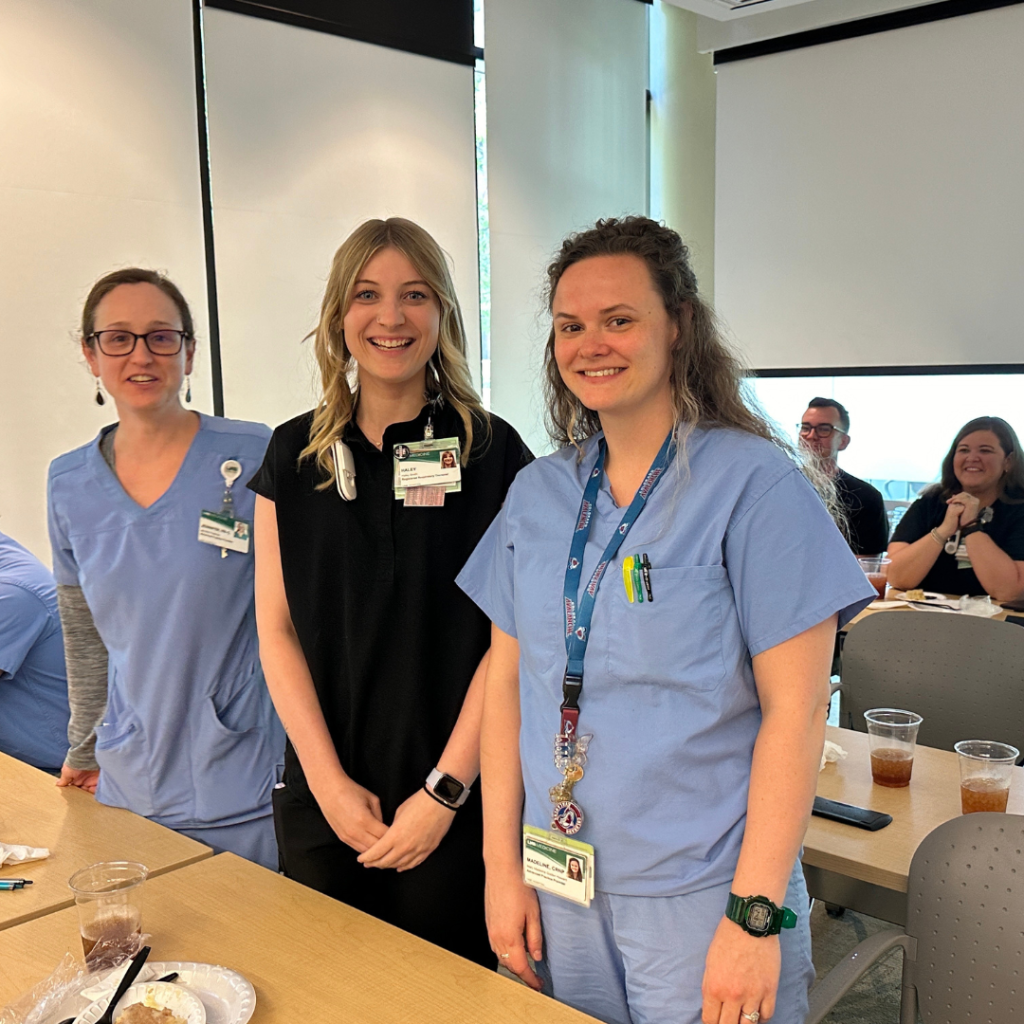UAB Care, a quality improvement initiative at UAB Medicine, in 2021 began working with ENT staff and other disciplines to create a Trach Management Project. The goal was to establish best practices in managing care for patients who have undergone a tracheostomy – sometimes called a tracheotomy, or simply a “trach” – and also to formalize a Trach Management Team.
A tracheostomy is a procedure to create an opening into the trachea (windpipe) on the outside of the neck, to improve oxygen flow to the lungs. This past spring, UAB Care hosted an event with staff and patients to celebrate the successful implementation of the project.
Formalizing excellence
As a systematic quality improvement initiative, the UAB Care program works with various clinics and departments to standardize processes and reduce practice variations. It has achieved several clinical and operational successes, including the Trach Management Project. This effort sought to standardize tracheostomy care across the enterprise, with the ultimate goal of improving patient safety and outcomes. Quality Outcomes Coordinator Denise Peek, MSN, RN, CNL, says the Trach Management Team, which began practicing in January 2024, was the result of a long process to promote excellence.
“Our ENT providers noticed variation across the enterprise in how tracheostomies were managed,” Peek said. “They came to UAB Care with the proposal for a formalized Trach Management Team that would function within their oversight, as well as under the Complex Airway Multidisciplinary team. The previous team included respiratory therapists only, but the new Trach Team added advanced practice providers. UAB Care moved the project forward, taking a deep dive into best practices and guidelines that we followed in organizing the team. Basically, we analyzed what we were doing, investigated ways to do those things better, and achieved an official approach to trach management care.”
The surgeons who perform tracheostomies were already seeing excellent outcomes, but Peek says the program was designed to ensure that the care provided after the initial procedure more consistently meets the same high standards. Beyond streamlining the processes, patient education was another essential component of the project. The team utilized the Emmi® patient education system to develop an instructional video, and it also created a guide booklet for patients (and their families) discharged with a trach.
‘Why we do what we do’

Peek emphasizes that the project proceeded despite obstacles.
“We came up with six key initiatives for the project and met every two weeks to develop and implement project goals,” Peek said. “A lot of that was done while all stakeholders were dealing with COVID-19, supply chain issues, and related limitations of long-term projects. One thing that really propelled our efforts in the middle of all that was the passion this team had for our project. All of us know that a permanent tracheostomy is a life-altering procedure, in terms of the physical impact and the emotional and mental stress that patients experience. Getting the best possible outcomes for these patients is always in mind.”
Evidence of the project’s success came not only in the form of a new team, policies, and care plans but also from direct patient feedback. The team saw a dramatic example of that during the celebration event in the spring.
“A family spoke at the celebration,” Peek said. “They had an adult child with muscular dystrophy and were very reluctant to have a trach placed. But the trach team had done a thorough and compassionate job of helping them make a fully informed decision. These parents shared an emotional account of the care their child received and how comforted they were by the team’s approach. When you hear a family speak so frankly about their gratitude – more so than any data we can compile – that feedback tells every medical professional involved, ‘This is why we do what we do.’”
